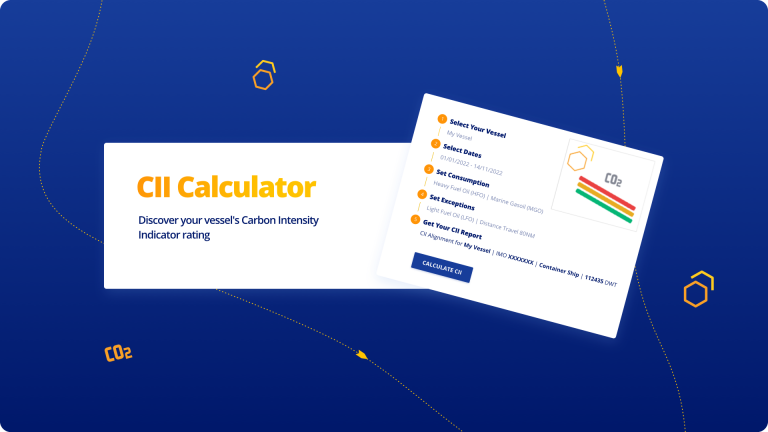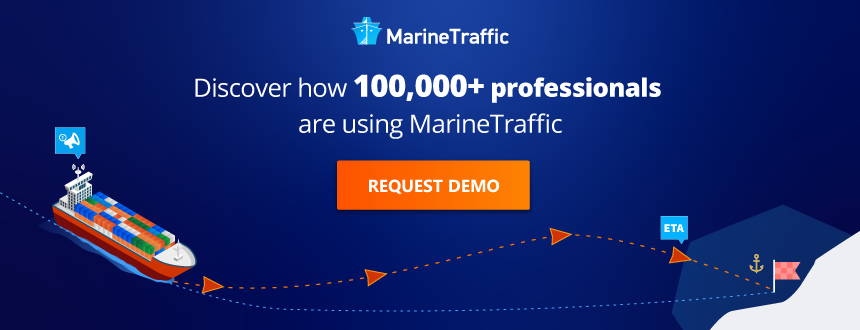Source Marine Traffic
As the shipping industry looks to comply with new regulations surrounding environmental impact, new digital tools are being rolled out to support companies in lowering their carbon emissions
Media www.rajawalisiber.com – The International Maritime Organization (IMO) has set ambitious decarbonisation targets for the shipping industry, including reducing carbon emissions by 50% by 2050 compared to 2008.
This follows the 2015 Paris Climate Agreement, where countries agreed to limit global warming to well below 2°C above pre-industrial levels and pursue efforts to limit the temperature increase to 1.5°C.
To achieve this, IMO has implemented regulations to help shipping companies achieve these targets. On 1 January this year (2023), the Carbon Intensity Indicator (CII) was introduced. Now, all ships of 5,000 gross tons or above are required to collect and report their carbon emissions data as CO2 emitted per cargo-carrying capacity and nautical mile.
The output will be measured in grams of carbon dioxide per tonne-mile of cargo transported.
Shipping companies and authorities are now working to ensure that they can track their carbon emissions and stay in line with the new regulation.
Many firms are investing in new technologies, such as carbon capture and storage, hull efficiency options, weather routing and slow steaming, to reduce their emissions. Governments are also incentivising companies to invest in clean technologies and reduce their carbon footprint.
Why CII?
CII also fits into broader decarbonisation aims. The shipping industry is responsible for around 3% of global carbon emissions, making it a significant contributor to climate change.
Stakeholders may initially have concerns about the complexity of supporting environmental aims. However, the CII regulation is simple to comply with and has significant benefits.
First, it provides a standardised way of measuring and reporting carbon emissions to help reduce the shipping industry’s overall environmental impact.
It will also provide a clear roadmap for the industry as it works towards decarbonisation. By tracking progress towards decarbonisation goals, the regulation will ensure that the industry can meet its environmental responsibilities and contribute to global efforts to combat climate change.
By reducing its carbon footprint, the industry can help to lower overall global carbon emissions and mitigate the impact of climate change. The CII is a crucial step towards achieving this goal.
Based on a ship’s CII, its carbon intensity will be rated A, B, C, D or E (where A is the best). The rating indicates a significant superior, minor superior, moderate, minor inferior, or inferior performance level.
The performance level will be recorded in a ‘Statement of Compliance’ to be further elaborated in the ship’s Ship Energy Efficiency Management Plan (SEEMP).
A ship rated D for three consecutive years (or E for one year) must submit a corrective action plan to show how the required index of C or above will be achieved. Administrations, port authorities and other stakeholders, as appropriate, are encouraged to provide incentives to ships rated as A or B.
The CII calculator

MarineTraffic has developed a CII calculator to allow shipping customers to search various vessel types by name, IMO number or MMSI (Maritime Mobile Service Identity), add parameters such as vessel type and fuel-used, automatic distance travelled, to get an estimation of their CII rating.
Since, regulatory compliance is a major concern for organisations as governments around the world have introduced carbon pricing schemes, taxes and reporting requirements, the CII tool can help shipping companies meet these requirements.
Functionally, this means helping them to avoid fines and penalties associated with non-compliance, and ensure a smooth transition towards a low-carbon digitalised era.
As an equation it looks like this:
CII= CO2gr/ (DWT*nm).
First, users of the tool chose to select a vessel (name, IMO or MMSI). Then, they select the vessel type. Finally, more specific parameters can be selected by plugging in date, custom range and year.
It is also beneficial for ship managers/owners, operators and charterers.
Through the MarineTraffic CII,, users will have the best possible information on when the vessel carrying their cargo will arrive to plan their resources and maximise transparency for their customers.
Having ETAs (Broadcasted and Calculated) and tracking for vessels gives them quicker visibility than they can get from the company operating the ship.
Features include the ability to track any vessel as it makes cross-ocean voyages. This gives users visibility of vessel activity wherever and whenever they need it.
It also provides playback in the form of animated replays of vessel activity for the last five years
To try the MarineTraffic CII Calculator, click here

The road to decarbonisation
National governments are making efforts to help decarbonise the maritime sector, such as the recent MoU signed between the IMO, Singapore and Norway, to assist developing countries in their efforts to reduce emissions from ships and in ports.
However, before the CII, the IMO had been introducing other regulations to help the industry lower emissions.
For example, Amendments to the International Convention for the Prevention of Pollution from Ships (MARPOL) Annex VI were introduced on 1 November 2022. Developed under the framework of the Initial IMO Strategy on Reduction of GHG Emissions from Ships agreed in 2018, these technical and operational amendments require ships to improve their energy efficiency in the short term and thereby reduce their greenhouse gas emissions.
As a stimulus to reduce the carbon intensity of all ships by 40% by 2030 compared to the 2008 baseline, ships will also be required to calculate their attained Energy Efficiency Existing Ship Index (EEXI) to determine their energy efficiency.
A ship’s attained EEXI determines its energy efficiency compared to a baseline. This score will then be compared to a required index based on an applicable reduction factor expressed as a percentage relative to the Energy Efficiency Design Index (EEDI) baseline.
It must be calculated for ships of 400 gt and above in accordance with the different values set for ship types and size categories. The estimated attained EEXI value for each ship must be below the required EEXI to ensure the ship meets a minimum energy efficiency standard.
The 2020 sulphur cap exemplifies a desire for the sector to change prior to the CII, and over recent years, various controls have been introduced incrementally.
The IMO has adopted universal energy efficient measures that are legally binding across the entire industry. Baselines have been established for the amount of fuel each ship type burns, depending on cargo capacity.
Ships built in the future will have to beat this baseline, and by 2025, all new ships will need to be at least 30% more efficient. Currently, vessels need to have an energy efficiency plan in place that looks at areas such as improved voyage planning, technical measures such as waste heat recovery systems and cleaning the underwater parts of the ship and propeller at regular intervals.
These regulations make the EEDI ratings system mandatory for new ships and the SEEMP mandatory for existing vessels.
Similarly, the Environmental Ship Index (ESI) has been developed by the World Ports Sustainability Program (WPSP) as a voluntary system designed to improve the environmental performance of sea-going vessels. The index gives a numerical representation of the environmental performance of ships by scoring nitrogen oxides (NOX) and sulphur dioxides (SOX) emissions.




